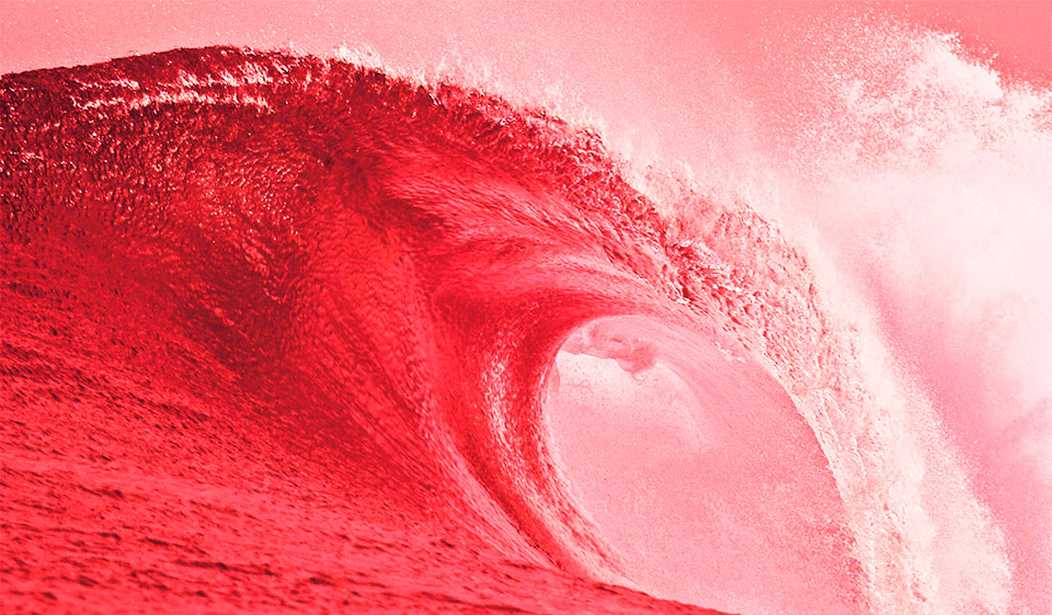Republicans have been looking ahead to November and licking their chops as they dream of obliterating the Democrats in the 2022 midterm elections — the first chance Americans will have to counter the highly irregular and controversial 2020 election and its catastrophic effects on the country and the world. But having seen near-certain victory miraculously disappeared one time too many, Republicans are also tempering their optimism. Thus, every sign that things are on track for a great political correction is welcome. On Tuesday, we got a great, big, flashing one.
John Couvillon, the founder of MC Analytics & Polling, has analyzed voter turnout in the ten states that have run primaries so far in 2022, compared it to 2018 (the last midterm election, in which Democrats won back control of the House), and found massive shifts toward Republican turnout in all but one of them.
And what started with the Texas primary (a 60% Republican electorate in 2018 increasing to 65% in the March primary) has almost without exception been the case in the other nine primaries held between May 3 and last night. Not only has (in the 10 state contests analyzed) the Republican share of the electorate increased from 53 to 61%, but overall turnout has increased 15% (a 32% increase in Republican primary turnout coupled with a 3% decrease in Democratic turnout).
PARTISAN PRIMARY TURNOUT, 2022 v 2018
Now we have a sample of 10 states.
Overall turnout up 21% (and 2018 was a high turnout year); Dem turnout +3%, Rep turnout +38%
The Republican % of the vote went from 53 to 60% of the electorate.
(1/2) pic.twitter.com/LIAdThNEtx— John Couvillon (@WinWithJMC) May 18, 2022
Looking at the individual states, we see that Oregon alone saw a decrease (one whole percentage point) of the Republican share of the electorate — 44% in 2018 to 43% this year. But Oregon was never going to elect any Republicans to national office any time soon, anyway.
Meanwhile, it’s heartening to see that in Pennsylvania, which Joe Biden allegedly won in 2020, Republicans have increased from 45% of the 2018 midterm electorate to 54% of the electorate in the 2022 midterms — a 9-point swing. RIP, Pennsylvania Democrats.
Seven of the other states Couvillon analyzed — Texas, Indiana, Ohio, West Virginia, North Carolina, Idaho, and Kentucky — went for Trump in 2020, so it’s not surprising to see Republicans overrepresented there. But it’s still reassuring to see these states trending even redder.
In Nebraska, which gave four of its five electoral votes to Trump and one to Biden, nearly three-quarters (73%) of this year’s midterm primary voters were Republican.
Related: Generic Ballot Shows GOP Crushing Democrats by 11 Points in Midterm Election
In his report, Couvillon explains that midterms have lower overall turnout than presidential elections, making partisan enthusiasm an even more noteworthy indicator during midterm years. JMC only compares enthusiasm and turnout within a state if both parties are running a contested primary for a statewide office. The history of midterm analyses since 2010 is illustrative:
When examining midterm data in 37 qualifying states between 2010 and 2018, JMC found that Republicans got 55% of the primary vote both in 2010 and 2014 (both were GOP landslide years). In 2018 (which was a Democratic landslide year), there was an 18-point swing to a 54% Democratic primary electorate. In other words, partisan primary party vote does have some predictive value.
Republicans are currently trending at 60% of the primary vote — five points higher than in 2010 and 2014, which were both GOP landslide years. While no one wants to pop a cork too soon, it’s at least looking safe to put the champagne on ice and dust off the flutes at this point.










Join the conversation as a VIP Member